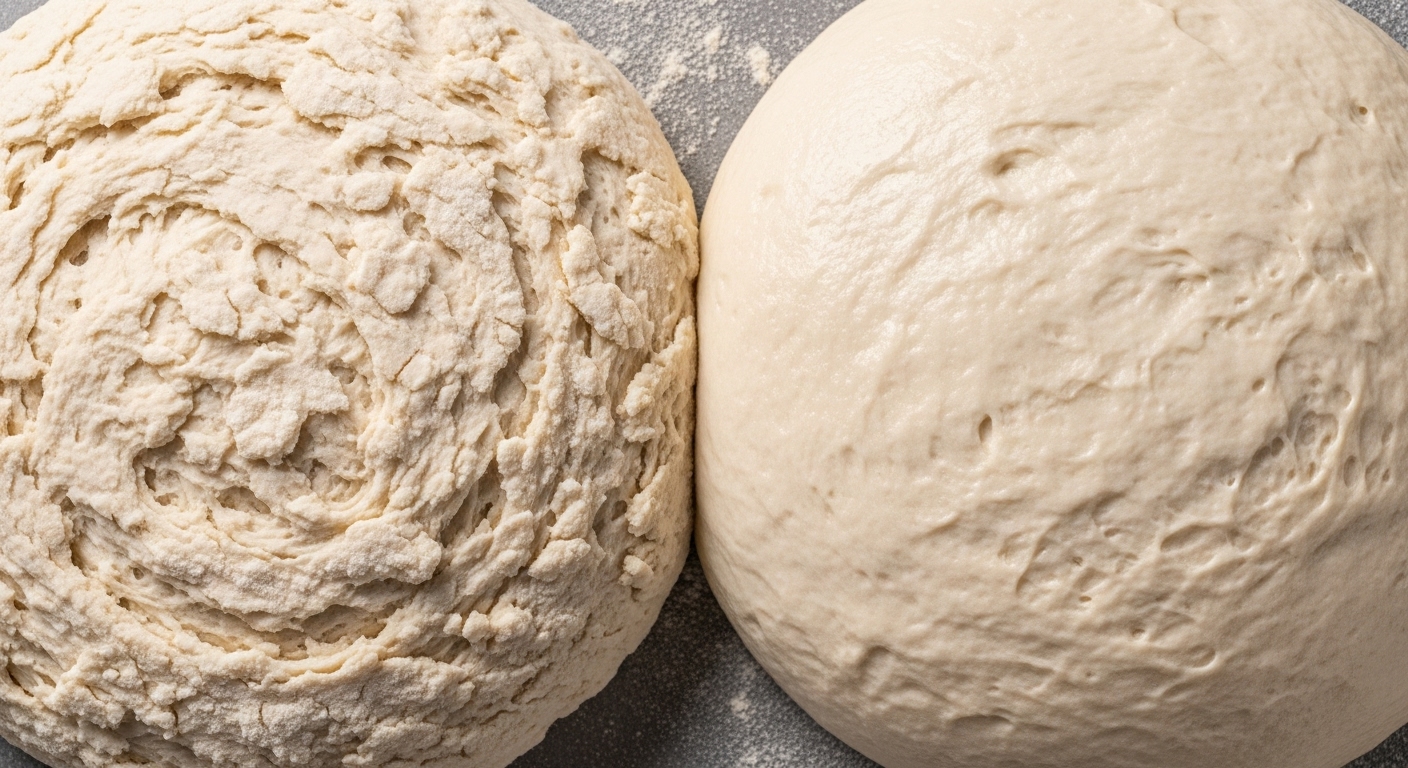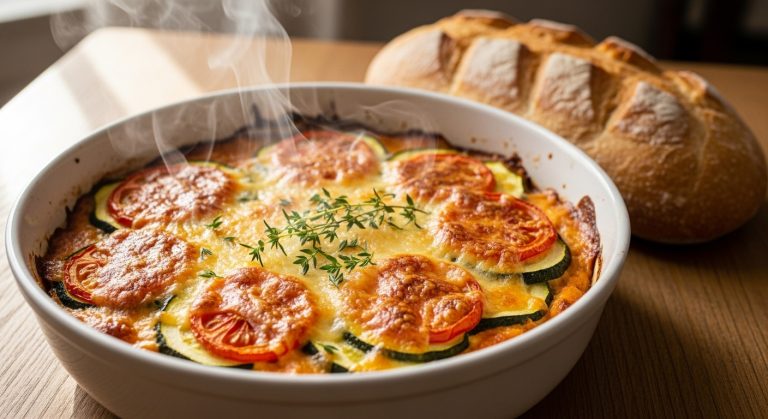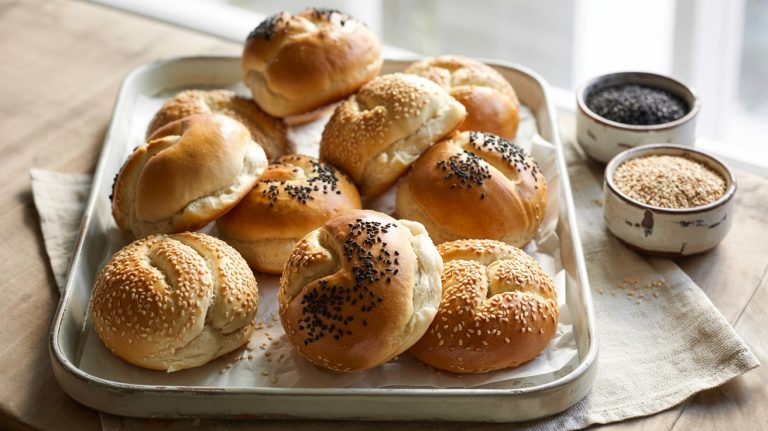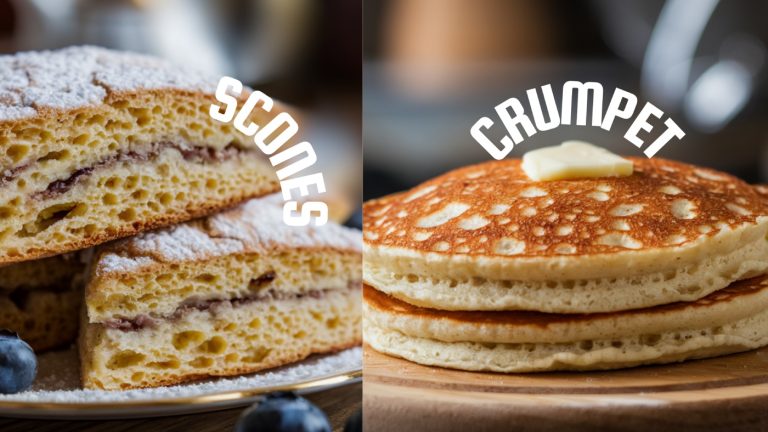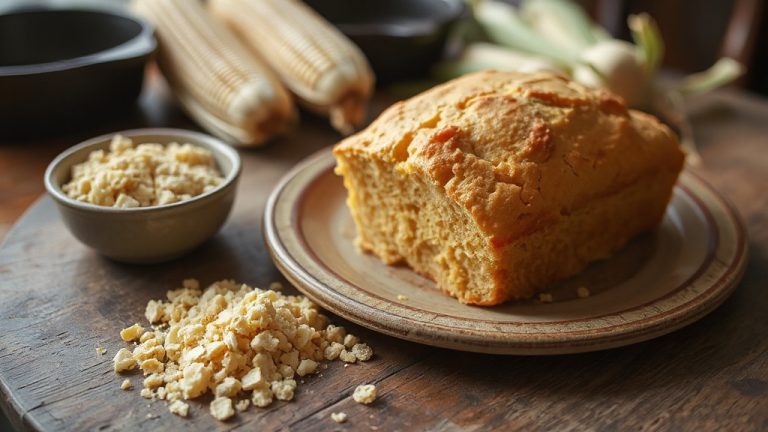Can You Over Knead Pizza Dough: From Disaster to Delicious
Yes, you can overknead pizza dough. When you knead it too much, the gluten strands tighten excessively, making the dough tough, rubbery, and resistant to stretching. Overkneading also generates heat, which weakens yeast activity and reduces flavor complexity.
The dough may feel warmer, sticky, or tear easily, failing to hold shape properly. Monitoring kneading time carefully prevents this. If you want to understand the signs, effects, and how to avoid overkneading, there’s more detailed insight ahead.
Key Takeaways
- Yes, over-kneading pizza dough tightens gluten too much, making the dough tough and hard to stretch.
- Over-kneaded dough feels sticky, rubbery, warmer, and may tear or look rough with cracks.
- Excessive kneading reduces yeast activity, limiting dough rise and flavor development.
- Proper kneading time is about 5–7 minutes by hand; longer kneading risks overworking the dough.
- To prevent over-kneading, monitor dough texture and stop when it’s smooth, elastic, and passes the windowpane test.
Signs That Show You’ve Over-Kneaded Your Pizza Dough
When you over-knead pizza dough, several clear signs reveal the damage to its structure and workability. You’ll notice the dough’s surface tears easily and becomes wetter, losing its smoothness and turning rubbery or sticky. It may also feel warmer than usual due to heat buildup from excessive kneading.
Proper humidity management during dough resting can help mitigate some issues caused by over-kneading. Over-mixing can cause over-kneading, resulting in tough dough, but under-kneading yields a dough with poor elasticity and weak gluten network.
The dough weakens, failing to hold shape or stretch properly—it resists expansion and becomes tight, ripping rather than stretching. Handling becomes difficult; the dough feels tough, less pliable, and may break apart during shaping.
Visually, the dough looks rough or uneven with small cracks, losing its soft, springy appearance. These indicators confirm gluten network breakdown, signaling you should stop kneading to prevent further damage and maintain dough quality.
How Over-Kneading Affects Dough Texture and Flavor?
Recognizing the signs of over-kneading is just the first step; understanding how it alters dough texture and flavor is key to mastering pizza dough quality. When you over-knead, gluten strands become excessively tight, increasing elasticity and making the dough resistant to stretching.
This results in a denser, tougher crust with a tight crumb and less airiness. Choosing the right dough handling tools can help prevent overworking your dough during kneading.
Over-kneading tightens gluten, making dough tough, dense, and resistant to stretching, impacting crust texture and airiness.
Additionally, excess kneading raises dough temperature, accelerating oxidation that diminishes flavor complexity and yeast activity. The dough loses its natural, nuanced taste and becomes harder to shape due to increased resistance. Over kneaded dough often shows less bubbly bubbles and character during baking, reflecting a weaker gluten structure.
- Gluten overdevelopment causes snapping instead of smooth stretching
- Denser, chewier crust with tighter crumb structure
- Elevated temperature accelerates oxidation, reducing flavor depth
- Reduced fermentation efficiency limits dough rise and complexity
- Difficult dough handling due to excessive elasticity and spring-back
Differences Between Under-Kneaded and Over-Kneaded Dough
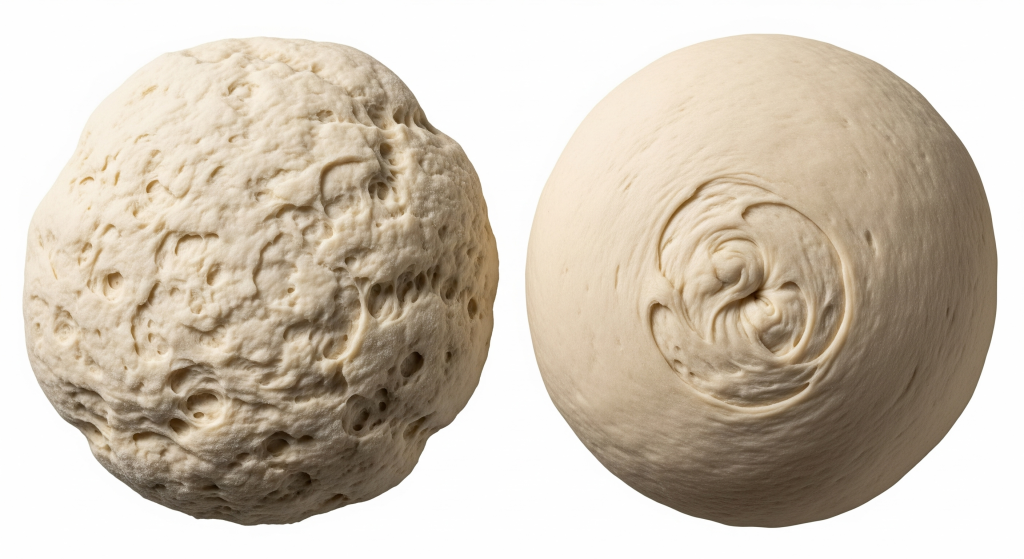
Although both under-kneaded and over-kneaded dough exhibit handling challenges, their physical characteristics and structural properties differ markedly. You’ll notice under-kneaded dough is sticky, irregular, and tears easily due to weak gluten. In contrast, over-kneaded dough is tight, elastic, and resists stretching but may break down if overstressed.
These differences affect dough handling and final crust texture distinctly. Proper kneading develops gluten, which is crucial for dough elasticity and chewiness, ensuring the dough can stretch without tearing. Gluten development is essential to achieve this balance. Bread makers with customizable kneading cycles can help achieve the ideal gluten network for pizza dough.
| Aspect | Under-Kneaded Dough | Over-Kneaded Dough |
|---|---|---|
| Texture | Sticky, irregular | Smooth, tough |
| Stretchability | Tears easily | Initially tight, then weakens |
| Gluten Development | Weak bonds, poor gas retention | Over-tight, may break down |
| Crust Outcome | Dense, gummy | Tough, less airy |
| Handling | Difficult shaping | Resists shaping, collapses if stretched |
Optimal Kneading Duration and Techniques for Pizza Dough
Because proper kneading directly influences gluten development and dough texture, understanding ideal kneading duration and techniques is essential for crafting high-quality pizza dough. Typically, hand kneading takes 5 to 7 minutes, while machine kneading at medium speed requires about 4 to 5 minutes.
Resting dough for 30 minutes before kneading reduces effort and improves softness. Employ rhythmic pressing, folding, and turning motions using the heel of your hand to develop gluten evenly without damaging the network. Allowing the dough to rest for 10-20 minutes before kneading helps relax the gluten, making kneading easier and more effective resting period.
- Knead with moderate, consistent pressure to prevent gluten breakdown
- Rest dough 30 minutes pre-kneading to hydrate flour and relax gluten
- Use stretch-and-fold techniques post-rest for enhanced gluten structure
- Monitor dough texture: smooth, elastic, slightly tacky, and passes windowpane test
- Adjust kneading time according to dough hydration and fermentation style
Tips to Prevent Over-Kneading When Making Pizza Dough
When you knead pizza dough, applying excessive force or extending the process beyond ideal duration can damage the gluten network, resulting in a tough, unyielding dough that resists shaping and produces a dense crust. To prevent over-kneading, monitor dough texture closely, stopping when it becomes stiff or resistant.
Over-kneaded dough can also become too tough to knead, requiring resting periods to recover softness. Using a convection oven’s even heat distribution can help ensure consistent baking results once your dough is properly prepared.
Use the autolyse method by resting the dough 30–60 minutes to hydrate flour and relax gluten, reducing kneading needs.
Add oil near the end of kneading to enhance gluten development and extensibility.
Incorporate salt after initial hydration to avoid premature tightening.
Employ folding techniques during fermentation to develop gluten without excess kneading.
Use the poke test to gauge readiness.
Finally, maintain proper hydration—too little water causes toughness, while too much makes dough sticky—both increasing the risk of overworking.
Frequently Asked Questions
Can Over-Kneading Pizza Dough Affect Its Nutritional Value?
You won’t substantially affect the nutritional value by over-kneading pizza dough. The core nutrients—carbohydrates, proteins, vitamins, and minerals—remain stable despite mechanical overwork.
However, over-kneading can change dough texture and gluten structure, which might influence digestion ease but not nutrient content. To preserve nutritional quality, focus on proper fermentation and avoid excessive mechanical kneading, which mainly impacts texture and flavor rather than the dough’s fundamental nutritional profile.
Does Over-Kneading Impact Gluten-Free Pizza Dough Similarly?
You won’t see the same effects of over-kneading with gluten-free pizza dough as with traditional dough because gluten-free dough lacks gluten proteins. Instead of damaging a gluten network, over-kneading gluten-free dough mainly risks overhydration and stickiness.
Focus on gentle mixing to evenly incorporate ingredients and maintain crumb tenderness. Ingredient balance, especially hydration and binder ratios, plays a far more critical role in dough quality than kneading intensity.
How Does Dough Temperature Rise During Kneading Affect Yeast Performance?
When you knead dough, friction raises its temperature, directly impacting yeast performance. Moderate warmth (25-30°C) speeds up yeast activity and fermentation, improving dough rise.
But if temperature climbs above 35°C, you risk stressing or killing yeast cells, which weakens fermentation quality. To optimize yeast health and enzymatic activity, control your dough’s temperature during kneading by adjusting water and flour temperatures, ensuring balanced fermentation and better dough structure.
Can Over-Kneaded Dough Be Rescued or Repaired Before Baking?
Imagine your dough as a delicate fabric stretched too far; you can soften it by letting it rest for 30-60 minutes, allowing gluten to relax.
You might gently rehydrate with small water additions and knead lightly.
Mechanical actions like pressing and reballing help redistribute moisture and structure.
Though these steps improve workability, remember the dough won’t fully regain ideal elasticity, and the final crust may be softer than perfectly kneaded dough.
What Tools Help Monitor Dough Elasticity During Kneading?
You can monitor dough elasticity using tools like the farinograph, which measures resistance changes during kneading, and extensographs that assess dough stretchability. Rheometers and texture analyzers provide precise viscoelastic data.
For hands-on checks, perform the windowpane test, finger poke test, or stretch and fold method to gauge gluten development. Combining mechanical readings with tactile feedback ensures you stop kneading at the most advantageous elasticity, preventing overworking the dough.
Too Much of a Good Thing: Finding the Sweet Spot in Dough Kneading
Remember, “too much of a good thing can be bad.” Over-kneading pizza dough tightens gluten excessively, making it tough and less flavorful.
By recognizing signs like stiffness and reduced elasticity, you can avoid this common pitfall. Aim for a balanced kneading time, using proper techniques to develop gluten just enough for that perfect chewy texture. With careful attention, you’ll consistently craft dough that’s both tender and delicious, every time.

